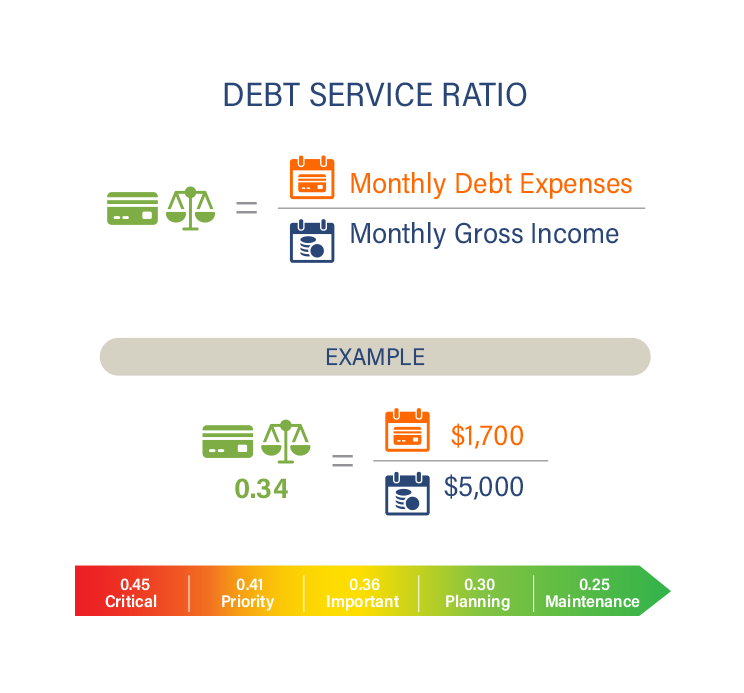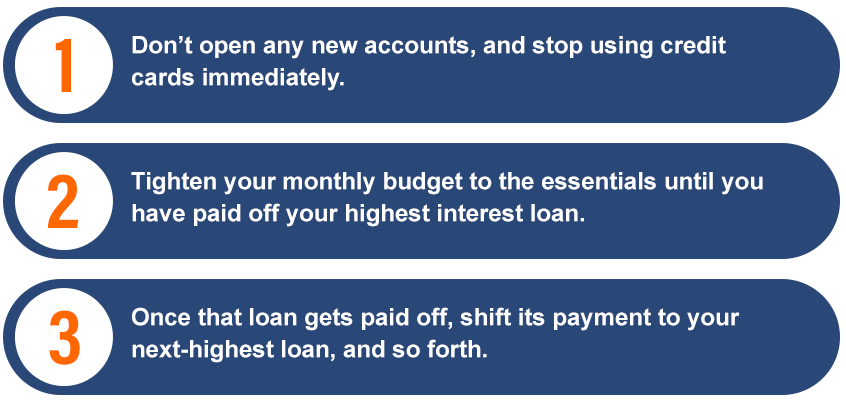 Manage Debt
Manage Debt
Debt can feel overwhelming, but it doesn’t have to be permanent. The resources here can guide you through managing and reducing your debt, setting you on a path toward financial freedom.

Assess Your Debt Risk
Follow the steps below.
Step 1 – Start by totaling your debt payments each month.
Include:
- Mortgage or rent payments
- Credit cards
- Installment debt
- Car loans
- Student loans
- Consumer line of credit
- Other payments that show on your credit report
Don't Include:
- Groceries
- Utility bills
- Cell phone payments
- Entertainment
- Hobbies
- Child support or alimony payments
- Other variable, non-survival expenses
Step 2 – Divide your monthly debt expenses by your gross income.
Is the total 36% or less of your gross income?
If so, you are probably safe, although you can make financial improvements by driving down what debt you have.
A good target to aim for is 25%.
However, if you are spending more than 36% of your monthly gross income in debt payments, you may be at risk of financial trouble.

Worried About the Risk of Debt?
You may be at risk of financial trouble. Make a plan to reduce your debts as quickly as possible.


Want to Learn More?


